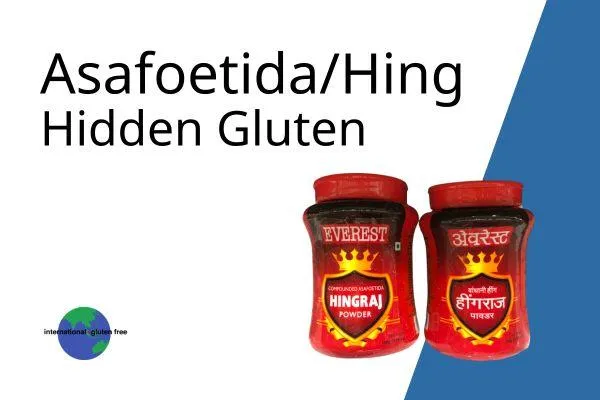Our Favorite
Gluten-Free Recipes

Does ASAFOETIDA/HING contain gluten?
Asafoetida, or Hing, might not be a familiar term to many, but it holds immense importance, especially for those navigating gluten-free choices in Indian cuisine.
So, what exactly is asafoetida? It's the resin, a gummy substance derived from a plant, notorious for its pungent aroma.
In culinary practices, a minute amount of asafoetida is added to dishes rich in legumes, not just to enhance flavor but also to mitigate any unwanted side effects.
Understanding Gluten Risk of Asafoetida
The real challenge arises with compounded asafoetida. To make it more user-friendly, it's often ground and mixed with flour, usually wheat flour or wheat starch.
This is a common ingredient in dishes like dahls where just a small amount may be added to the dish. It's crucial to note that a seemingly insignificant quantity can rapidly reach 20 parts per million, surpassing the safety threshold.
An Even Bigger Problem...
When asking if a dish is gluten-free, many people do not connect compounded asafoetida as added wheat flour. It is used in such small amounts, it is often overlooked or forgotten about.
Therefore, whether you're dining out or preparing Indian recipes at home, always inquire about the presence of asafoetida or hing, particularly in vegetarian dishes.
Finding Safe Ingredients
While some asafoetida varieties are produced with rice powder, the majority incorporate wheat. Hence, it's essential to ascertain the composition before consuming a dish.
If you're on the lookout for compounded asafoetida, head to an Indian specialty store, where the distinct aroma will guide you to the right aisle.
You have the option of purchasing the pure resin, although it requires more effort in handling. Alternatively, for a convenient and safe choice, you can order gluten-free compounded asafoetida online, ensuring the security of your gluten-free culinary journey.
This doesn't have to be the end!

Follow us on your favorite platform and browse through our favorite resources.
Social Media:
We’re on a mission to increase gluten-free resources, awareness, and knowledge around the world
Copyright International Gltuen Free 2025 - All Rights Reserved

